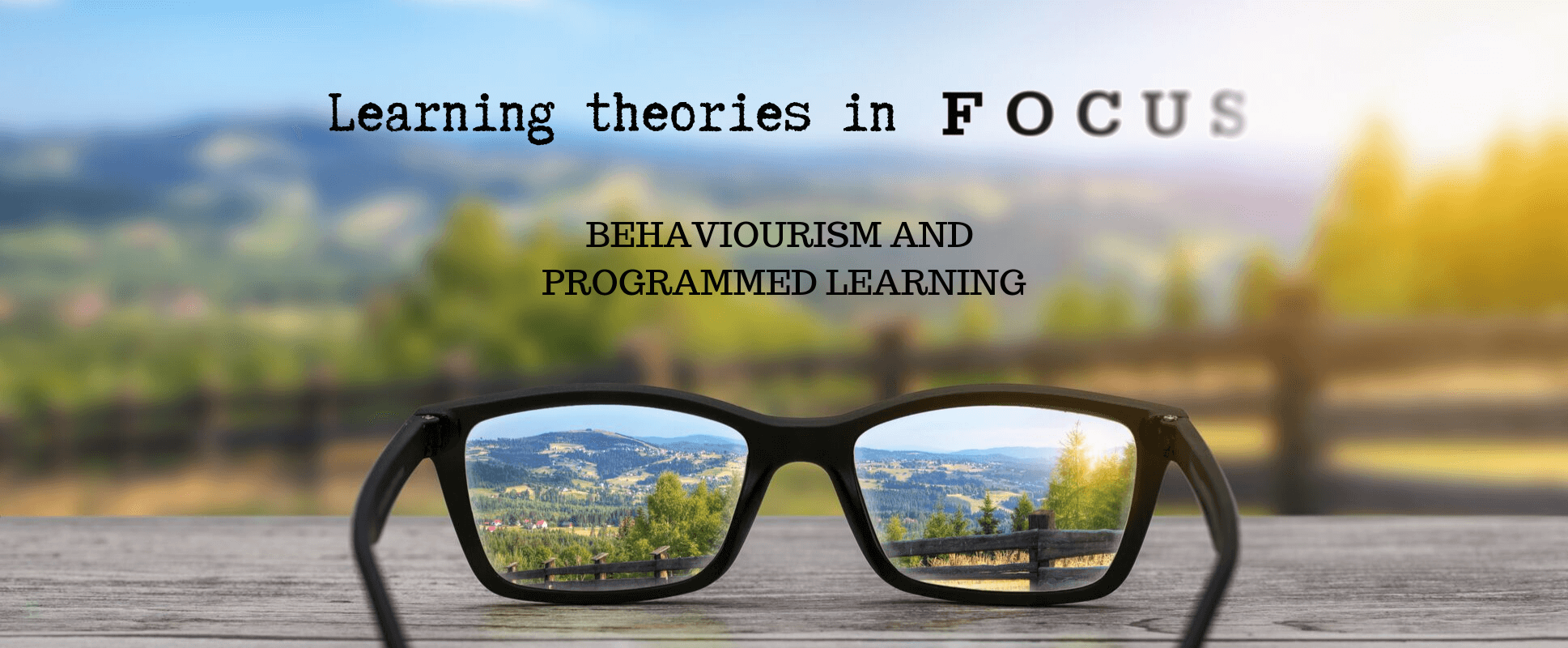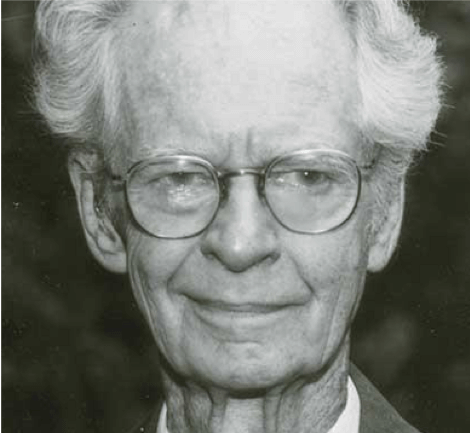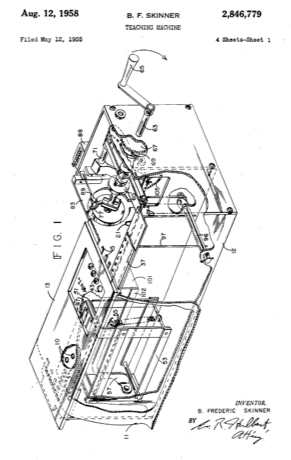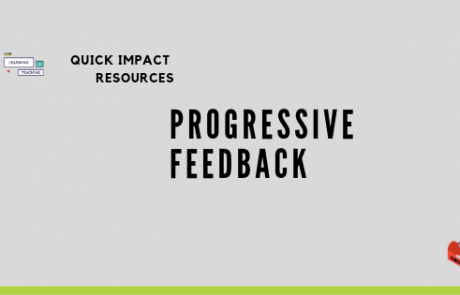
A s career academics, you probably know what works best in your classrooms. When it comes to promotion and awards; however, do you struggle to articulate the theory behind your practice? Or are you looking for new ways to enliven your teaching? This series of blogs will introduce you to some of the prominent theorists in the field of teaching and learning and provide some background to the pedagogical/andragogical approaches they subscribed to. While these posts will not be comprehensive biographies or deep analyses of theories, they will provide a taster that will hopefully whet your appetite for further exploration. The posts also contain resources that can guide the implementation of theory into practice.

Image: BF Skinner
Burrhus Frederick (BF) Skinner was a professor of psychology, working mainly at Harvard University, until his retiral in 1976. He was a proponent of behaviourism – a branch of psychology which focusses on learning as affected by changes in behaviour through external, or environmental, influences (Weegar & Pacis 2012). This was in opposition to the introspective method (thought, or learning, influenced by internal mental states) proposed by eminent psychologists such as Freud or Jung.
Behaviourism assumes the learner begins their experience as a blank slate (tabula rasa) and forms their learning through positive or negative reinforcement (Learning Theories n.d.). Skinner went further with the concept of radical behaviourism, which tempers the idea of tabula rasa by recognising that other factors, such as biological makeup and emotions, play a part in psychological states, and learning. He also was a researcher and proponent of a theory called operant conditioning, which asserts that someone (a student) will modify their behaviour (learn something) in order to be rewarded or to avoid punishment (Nebel 2017).
In 1958, Skinner introduced Harvard students, and the world, to programmed instruction which set the following (now) familiar principles:
- Learning (or behavioural) objectives (which guide the learning)
- Active learning (learners ‘do’ something)
- Chunking (learning is broken into smaller, manageable chunks, so they have a sense of progression)
- Immediate feedback (learners get feedback as they go)
- Self-pacing (learners set the pace rather than their teachers).
(Penn State University 2016)
Programmed instruction influenced other theories, such as self-paced and self-guided open learning (Open University is an example) and spawned chunked and sequenced learning examples such as the popular children’s television program Sesame Street.
Behaviourism: how to use it
You can probably recognise the teaching machine in modern eLearning but how can you use BF Skinner’s other work to inform your current classroom teaching practice?
When designing learning, you can:
- Set learning objectives/outcomes or goals.
- Identify the current ‘state’ of the learner (what do they know before they begin to learn).
- Provide learners with clear steps to achieve their learning outcomes.
- Provide necessary support for the learning.
(Penn State University 2016)
The basic principles of Skinner programmed instruction, may provide a useful model for revitalising your teaching practice. These are set out below with resources for further exploration.
Learning objectives
Setting clear objectives at the start of a session will help to guide the learning and keep students focussed. For those who are in doubt, you may like to read The Educational Value of Course-level Learning Objectives/Outcomes (Eberly Center for Teaching Excellence & Educational Innovation n.d.).
Active learning
Having students do something that relates to the learning objectives will help them to apply any theories or concepts they have been exposed to. Tutorial sessions are an ideal time to run these activities. These may include:
- Simulations
- Problem-based learning
- Case study analysis
- Active reading.
The Berkley Center for Teaching & Learning have some Active Learning Strategies (UC Berkeley n.d.) that you might like to use. The University of Connecticut’s Center for Excellence in Teaching and Learning has another great resource on Active Learning Strategies that, as well as providing solid background information, has some practical examples.
Chunking
Breaking learning into themed chunks allows a learner to process them more easily (Fountain & Doyle 2012). This article from The University of Sydney on Chunking your class (Liu 2016) shows how to apply chunking techniques to your lectures.
Immediate feedback
Timely feedback is essential for progression through learning. Nichol and Dick (2007, p. 205) identified seven principles of good feedback practice which allowed for students to be self-regulated learners. This is used in formative assessment (Eberly Center for Teaching Excellence & Educational Innovation n.d.). The seven principles of good feedback practice are:
- helps clarify what good performance is (goals, criteria, expected standards)
- facilitates the development of self-assessment (reflection) in learning
- delivers high quality information to students about their learning
- encourages teacher and peer dialogue around learning
- encourages positive motivational beliefs and self-esteem
- provides opportunities to close the gap between current and desired performance
- provides information to teachers that can be used to help shape teaching.
Christina Hendricks’ (2012) blog article on the Seven principles of effective feedback practice provide some guidance on how these principles could manifest in a learning environment.
Self-pacing
One of the principles of adult learning is self-directedness (Conaway & Arnold 2015). For more on these principles see the separate blog post on Adult Learning Principles and the work of Malcolm Knowles. Read the University of Waterloo’s Center for Teaching Excellence article on Self-Directed Learning: A Four-Step Process (University of Waterloo n.d.) for how to incorporate this principle into your teaching practice.
There is little doubting the impact that BF Skinner’s work has made on the landscape of modern teaching and learning. Whether you are a committed behaviourist or would just like to include some of the principles mentioned in this blog, having an understanding behaviourism and Skinner’s principles will enhance your teaching practice.

Image: BF Skinner’s teaching machine patent 1955
A little something extra: The teaching machine
Other than his work on programmed learning and behaviourism, BF Skinner patented what he called the ‘teaching machine’ in 1958. You may recognise this as a precursor to modern-day computer-based learning.
During World War II, there was an increasing need to automate learning, through film, in order to teach large numbers of servicemen. BF Skinner capitalised on the appetite for this new type of learning to propose his new ‘teaching machine’ based on the work on Sidney Pressey and Halcyon Skinner (Benjamin 1988). BF Skinner’s machine moved from Pressey’s multiple-choice question model to an answer constructed uniquely by the learner on paper, which they then compared to a revealed exemplar. By the early 1960s, a teaching machine boom was under way, led by players such as TMI-Grolier with their Mini Max. Skinner failed to push his own machine to the masses and as the 60s rolled on, public fear of a ‘dehumanised future’, as described by Huxley and Orwell (Benjamin 1988) called for the banning of the teaching of children by what amounted to robots.
To see the teaching machine in action, watch Teaching machine and programmed learning (Bonaiuti 2011).
References
Benjamin, L 1988, ‘A History of Teaching Machines’, American Psychologist, viewed 21 August 2019, <https://blog.grendel.no/wp-content/blogs.dir/15/files/2008/07/a-history-of-teaching-machines.pdf>.
BF Skinner n.d. [image], viewed 21 August 2019, <https://www.gizmodo.com.au/2016/04/why-bf-skinner-may-have-been-the-most-dangerous-psychologist-ever/>.
BF Skinner’s teaching machine patent 1955 [image], viewed 21 August 2019, <https://patents.google.com/patent/US2846779>.
Bonaiuti, G 2011, B.F Skinner. Teaching machine and programmed learning, viewed 21 August 2019, <https://www.youtube.com/watch?v=jTH3ob1IRFo>.
Conaway, W & Arnold, B 2015, The Keys to Online Learning for Adults: The Six Principles of Andragogy, viewed 22 August 2019, <https://www.researchgate.net/publication/299540188_The_Keys_to_Online_Learning_for_Adults_The_Six_Principles_of_Andragogy>.
Eberly Center for Teaching Excellence & Educational Innovation n.d., What is the difference between formative and summative assessment?, viewed 21 August 2019, <https://www.cmu.edu/teaching/assessment/basics/formative-summative.html>.
Eberly Center for Teaching Excellence & Educational Innovation n.d., The Educational Value of Course-level Learning Objectives/Outcomes, viewed 21 August 2019, <https://www.cmu.edu/teaching/resources/Teaching/CourseDesign/Objectives/CourseLearningObjectivesValue.pdf>.
Fountain, S & Doyle, K 2012, “Learning by Chunking”, Encyclopedia of the Sciences of Learning, viewed 21 August 2019, <https://link.springer.com/referenceworkentry/10.1007%2F978-1-4419-1428-6_1042>.
Harvard University n.d., B. F. Skinner (1904-1990), viewed 21 August 2019, <https://psychology.fas.harvard.edu/people/b-f-skinner>.
Hendricks, C 2012, Seven principles of effective feedback practice, You’re The Teacher, viewed 21 August 2019, <http://blogs.ubc.ca/chendricks/2012/10/31/seven-principles-of-effective-feedback-practice/>.
Learning Theories n.d., Behaviorism, viewed 21 August 2019, <https://www.learning-theories.com/behaviorism.html>.
Liu, D 2016, Chunking your class – lessons we learnt from observing other lecturers, viewed 21 August 2019, <https://sydney.edu.au/education-portfolio/ei/teaching@sydney/chunking-class-lessons-learnt-observing-lecturers/>.
Nebel, C 2017, Behaviorism in the Classroom, viewed 21 August 2019, <https://www.learningscientists.org/blog/2017/8/10-1>.
Pappas, C 2014, Instructional Design Models and Theories: Programmed Instruction Educational Model, viewed 21 August 2019, <https://elearningindustry.com/programmed-instruction-educational-model>.
Penn State University 2016, Skinner’s Programmed Instruction, viewed 21 August 2019, <http://www.personal.psu.edu/wxh139/Skinner.htm>.
UC Berkeley n.d., Active Learning Strategies, viewed 21 August 2019, <https://teaching.berkeley.edu/active-learning-strategies>.
University of Waterloo n.d., Self-Directed Learning: A Four-Step Process, viewed 21 August, <https://uwaterloo.ca/centre-for-teaching-excellence/teaching-resources/teaching-tips/tips-students/self-directed-learning/self-directed-learning-four-step-process>.
Weegar, A. Pacis, D 2012, A Comparison of Two Theories of Learning – Behaviorism and Constructivism as applied to Face-to-Face and Online Learning, viewed 21 August 2019, <https://www.g-casa.com/conferences/manila/papers/Weegar.pdf>.
L&T Tool Box
- Generating Captions with Canvas Studioadmin2019-07-16T09:44:52+10:00
Generating Captions with Canvas Studio
- Top Tips and Feedback Infographics (Canvas)2018-11-19T12:05:19+11:00
Top Tips and Feedback Infographics (Canvas)













